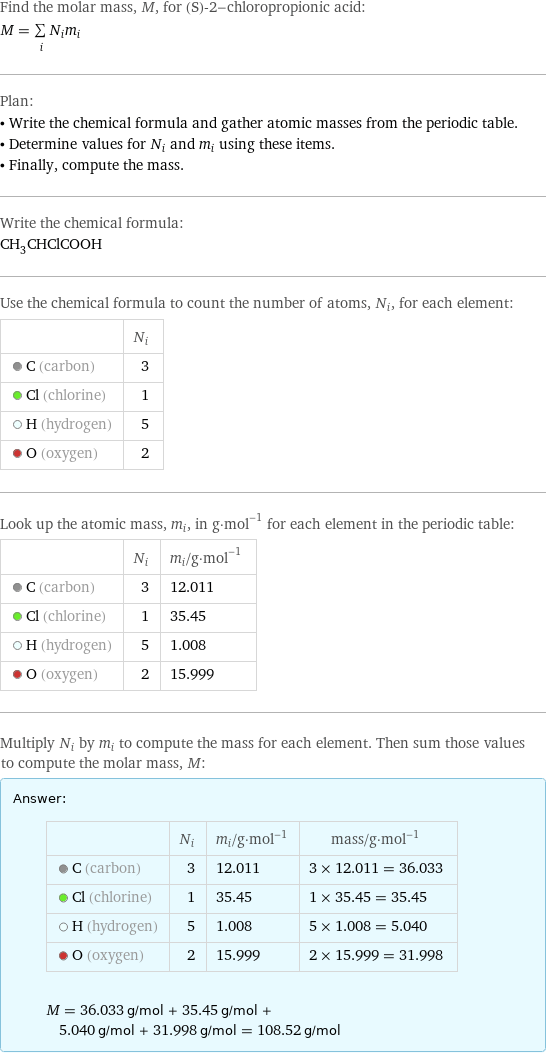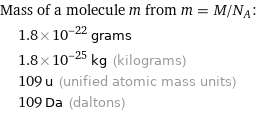Input interpretation

(S)-2-chloropropionic acid | molar mass
Result

Find the molar mass, M, for (S)-2-chloropropionic acid: M = sum _iN_im_i Plan: • Write the chemical formula and gather atomic masses from the periodic table. • Determine values for N_i and m_i using these items. • Finally, compute the mass. Write the chemical formula: CH_3CHClCOOH Use the chemical formula to count the number of atoms, N_i, for each element: | N_i C (carbon) | 3 Cl (chlorine) | 1 H (hydrogen) | 5 O (oxygen) | 2 Look up the atomic mass, m_i, in g·mol^(-1) for each element in the periodic table: | N_i | m_i/g·mol^(-1) C (carbon) | 3 | 12.011 Cl (chlorine) | 1 | 35.45 H (hydrogen) | 5 | 1.008 O (oxygen) | 2 | 15.999 Multiply N_i by m_i to compute the mass for each element. Then sum those values to compute the molar mass, M: Answer: | | | N_i | m_i/g·mol^(-1) | mass/g·mol^(-1) C (carbon) | 3 | 12.011 | 3 × 12.011 = 36.033 Cl (chlorine) | 1 | 35.45 | 1 × 35.45 = 35.45 H (hydrogen) | 5 | 1.008 | 5 × 1.008 = 5.040 O (oxygen) | 2 | 15.999 | 2 × 15.999 = 31.998 M = 36.033 g/mol + 35.45 g/mol + 5.040 g/mol + 31.998 g/mol = 108.52 g/mol
Unit conversion

0.1085 kg/mol (kilograms per mole)
Comparisons

≈ ( 0.15 ≈ 1/7 ) × molar mass of fullerene ( ≈ 721 g/mol )

≈ 0.56 × molar mass of caffeine ( ≈ 194 g/mol )

≈ 1.9 × molar mass of sodium chloride ( ≈ 58 g/mol )
Corresponding quantities

Mass of a molecule m from m = M/N_A: | 1.8×10^-22 grams | 1.8×10^-25 kg (kilograms) | 109 u (unified atomic mass units) | 109 Da (daltons)

Relative molecular mass M_r from M_r = M_u/M: | 109